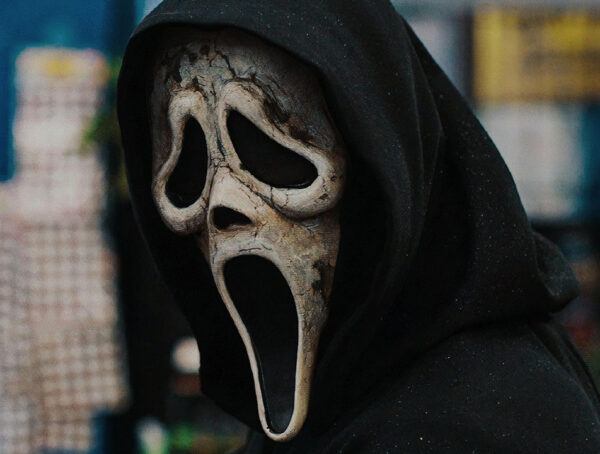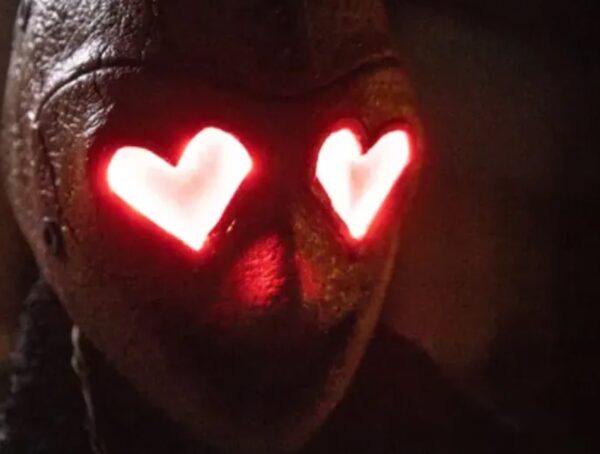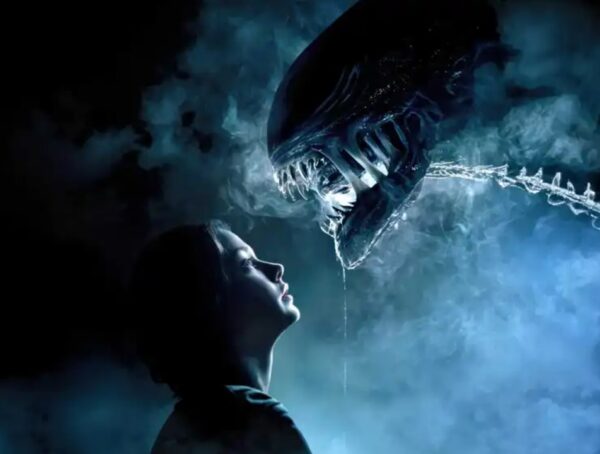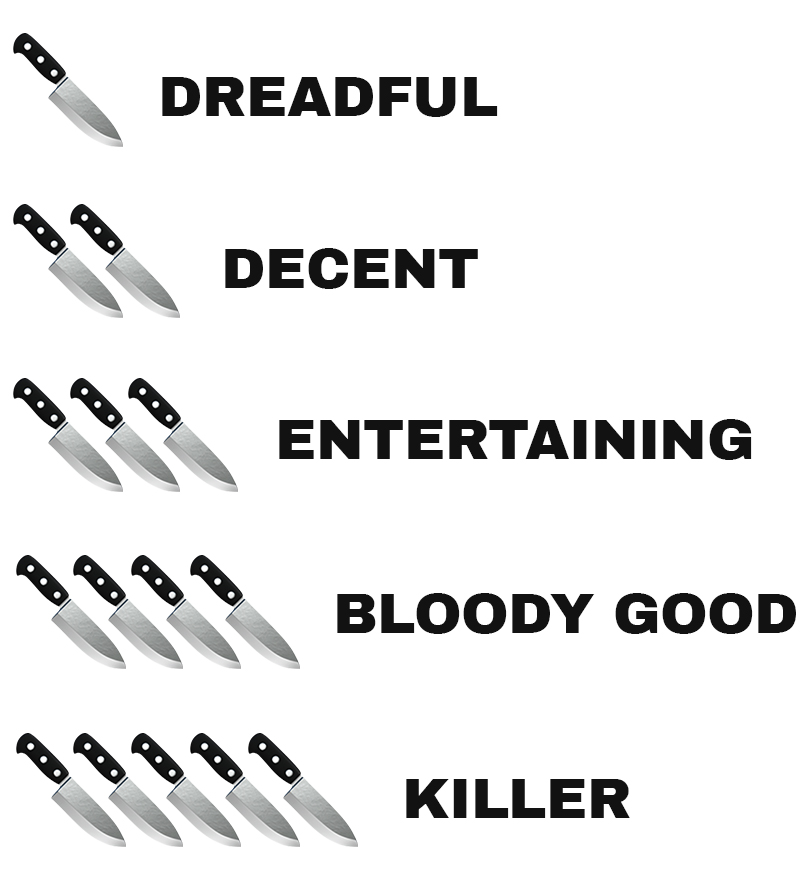Slow cinema is an arthouse film style known for its use of static shots, long panning scenes, minimal dialogue, and lack of soundtrack. It is not the same as a slow burn film. Slow cinema is more about the film technique, while a slow burn film is more about plot pacing. A slow burn film takes the majority of its time building to a bigger answer and most of the action happens in the last 30 minutes of the movie. Sounds quite similar to many horror films, doesn’t it? However, it is filled with dialogue, has music playing that enhances the mood of the scene, and its shots can cut quick or slow, but they don’t often linger longer than is comfortable. Slow cinema, like arthouse films, is a particular taste. Most of us were not taught to watch and understand movies in the way these films are often presented; non-linear storytelling, super metaphorical, and a message that is not always cohesive or explained. It can be a frustrating film style to sit through, but it’s also perfectly suited for the horror genre if used in an effective way. In my recent theater viewing of the latest slow horror cinema release, Skinamarink, I had a group walk out in the middle of it. Right before something freaky happened! Suckers. However, I’m not saying I’m a huge fan of slow cinema or that it’s more high-brow than any other type. I honestly only watch this type of film if it’s in the horror genre. I know. I’m a true martyr. You’re welcome.
Skinamarink, the debut full-length film by Kyle Edward Ball, is a film about two siblings whose home gets turned upside down(literally) after they become trapped inside by a monstrous entity. His inspiration for the film came from the collective nightmares of viewers of his Youtube channel, Bitesized Nightmares, where he began first creating visual shorts of viewer’s submitted nightmares. The dreamy, surreal visuals of art house cinema fit perfectly with the nightmare realm Skinamarink traps us in. Ball uses the techniques of slow cinema to turn the limitations of the film’s small budget to his advantage to bring unease and scares.

The elongated pacing of slow cinema works well in horror at two different ends of the spectrum. On one end, the camera focuses on a blackened doorway, where only the doorframe is illuminated by the light from cartoons on the television, forcing you to look at nothing else, causing the tension to rise the longer the shot lasts, as you wait impatiently to see what terrible thing is going to show itself “in this house.”

WHAT?! WHAT’S IN IT?!?!?!
On the other, the drawn out scenes of panning down hallways or dreamy scenes blending as the children move through the house can lull the viewer into a false sense of safety after they’ve gone on long enough without anything spooky happening. At times, Skinamarink rewards its viewers with….nothing. This purposeful choice is an effective scare method used in video games like F.E.A.R., where the background music becomes ominous and intensifies as you walk to a room only to open the door and nothing scary happens. Later, your character climbs their hundredth ladder with barely a sound at all and Alma’s standing directly in front of you when you reach the top. In both of those moments, you still feel the fear. Skinamarink uses this to its advantage so its biggest scares hit harder when they jolt onto the screen after a long series of mundane shots, where not much seems to have happened for a while.

One of the problems the kids face is the disappearance of all of the doors and windows in the house, among other things. The entity in their home is responsible for this, giving them no escape from the horrors it brings or sense of time of how long they’ve been trapped. This would absolutely scare a child, but it would be terrifying for adults stuck in that situation as well. The way this is filmed is simple. There’s one static shot, such as the scene where the camera focuses on a stuffed snake while old cartoons are heard playing on the television. We are left to take in the entire frame, waiting for something to happen. The camera doesn’t even use a slow zoom to direct our attention to the snake. It’s just part of the scene, then it’s not. It’s edited to jump straight to a shot of the exact space, with the snake plush removed. It may sound silly, but with the atmosphere created around it and the jarring tone played when it vanishes, it’s unexpected. It was just there a second ago. You saw it. What happened to it? It’s like it no longer exists. The knowledge we’re shown of the entity being able to remove anything, including us, shown when the entity removes Kaylee’s eyes and mouth because she doesn’t do what it said, from being whenever it pleases is peak existential dread.

We finally see a character’s face, and it’s been removed. Ball trolled us.
Ball’s choice to go without a soundtrack is a definite staple of slow cinema. It leaves the viewer in uncomfortable silence to listen for any sound at all. With the sound mixing between soft hushed voices and quick loud prop sounds, you never know how hard or soft to listen. It creates the effect of hearing things you aren’t sure are actually there or in your head. The ambient sounds on the television, static hiss, and muffled kid whispers create background music all their own. In a film like this, sound plays a huge role in trying to decipher what’s happening in the movie. The lack of showing everything directly is what leads our minds to fill in the gaps and our imaginations can usually cook up some creepy stuff, hence the inspiration for the film. People basically told Ball their deep, subconscious fears, he evil villain laughed, and put them all in one movie. The good thing is, as horror fans, they literally asked for it.
One of the creepiest scares using sound is when Kaylee goes into her parents bedroom after being told not to. First, she sees her dad, faced away, sitting on the side of the bed. He doesn’t seem right though. He repeatedly tells her to look under the bed (the monster under the bed being a common childhood fear), but when she looks she sees nothing. When she looks back to the bed, her dad is not there, but now her mother sits on the other side of the bed with her back turned to Kaylee. The mom definitely doesn’t seem right. She tells Kaylee that she and the dad love her and Kevin very much and that Kaylee should leave the room. As Kaylee begins to leave, the last thing we hear is the unnatural cracking of what seems like bone coming from the mother, as if she’s being physically broken by the entity or becoming something monstrous herself. I’m still on the fence as to whether I think the entity conjured up the fake parents to trick Kaylee or if they were being kept there and tormented too. By telling Kaylee to leave the room, it seemed the mom was trying to help her, as the entity wanted the same thing. Of course, it could have pretended to be the mom to convince her, since she didn’t listen to it the first time. Oh the infinite rabbit holes possibilities when you’re an entity that can control time and space. Are you there, Skinamarink? It’s me, Via.

When there is background noise, it’s usually from the cartoons that are playing throughout most of the film, either in short snippets the kids focus on or as background light and noise. One cartoon called “Prest-O Change-O” involves a white rabbit showing a dog a trick where it compresses its body until it disappears…over and over and over again. The clip is replayed to exhaustion and seems to have no other point than to make the audience go a little mad. This repetitive process of a silly, but pointless cartoon only makes sense later in the film when we see the same thing done, but in real life. We can only see the ceiling in the shot and some red liquid(assumed to be blood) flying up onto the ceiling. But it’s done repeatedly, just like the cartoon, and the sounds of one of the children(I assume it’s Kevin) screaming and crying for their mom. We’re left to infer that what happened with the rabbit is the same thing being done to the kid by the entity in the house, only this isn’t a cartoon, it’s real-life. It’s a traumatizing and heartbreaking moment (the one that stuck with me the most out of the entire film).
Skinamarink plays on the fear of the unknown by not showing us everything in direct shot. Ball films at unique, cut-off angles of rooms and events to create the sense of being from a child’s perspective of sight. Our fear of the unknown is greater when we are younger and while it may lessen as we grow up, it never fully goes away. Ball wants to tap into that part of your inner child and childhood nightmares.

Haven’t been this unnerved by a rabbit since Bunnicula.
Another director well-versed in creating dreamscapes and nightmares in horror is David Lynch. His films have great examples of slow cinema in horror long before it began creeping back into the indie horror scene. Twin Peaks is well-known enough for many of us to remember those first deep guitar notes as still shots and long pans of random nature and manufacturing of the Pacific Northwest fading into each other in the opening credits.
In Twin Peaks, the Red Room is a dream-like place out of time. Dialogue is limited and when spoken it sounds strange (actors recorded dialogue backward and it was then played forward to create that effect) to enhance the dream quality. Wide shots of the Red Room are shown with the actors sitting in chairs motionless for extended periods. When a close up is given to a character, it lingers on each of their faces, separately, for a long time, going back and forth between them as they share contemplative gazes, and there is a long pause before any dialogue is spoken. When a line is finally spoken or an action performed, like Laura Palmer holding her arms up like she’s holding an invisible vase, there is always a stillness left afterward before moving on to the next line of dialogue or part of the scene. From the symbolism of costuming and set coloring to clues within dialogue, Lynch truly wants you to savor a scene and gives you the time to take it all in.
These seemingly nonsensical, mundane scenes are revisited when they return to the Red Room, only this time they play out as horrific, twisted representations of what we originally saw. Calm, angelic Laura has become hostile and crazed, screaming with clouded eyes. The Man From Another Place is talking about dopplegängers. Dale Cooper is bleeding and being chased by himself. Close up faces break the fourth wall harassing the camera in between strobe light flashes. It’s quite an overload to the senses and its stark contrast to the mood of the earlier Red Room scenes create the feeling of things going seriously wrong there.

I use her scream as my alarm ringtone.
In Twin Peaks: The Return, we’re treated to a meta example of how slow cinema style can work for horror. A man is being paid by some billionaire to watch a big glass box. He doesn’t know why. So we’re sitting watching our glass box with him inside it, sitting, watching a glass box and we’re both waiting intently for something to happen inside that box. Eventually, the man invites his girlfriend over, bored of nothing happening with the box, and they get hot and heavy, possibly even suggesting we could be doing the same if we’re bored of waiting. That’s when it happens! The inside of the glass box grows pitch black and some sort of creature appears within. It has the lover’s attention now and they can’t look away as it breaks free from the glass and tears their faces off.

You wanna know what slow cinema is? It’s Dale Cooper not coming back in Twin Peaks: The Return until episode 16 out of freaking 18! Lynch, you bastard.
A genre that has grown in internet popularity among horror fans, incorporates slow cinema through Analogue Horror. Analogue Horror is horror fiction inspired by found footage horror and the uncanny appearance and sound of old VHS tapes, old radio fiction, and other outdated media. It’s characterized by its lofi visuals, cryptic messages, glitches, and audible and visual static. There are usually few or no characters at all and sparse dialogue, often giving plot information through methods like TV ads, radio broadcasts, or other nostalgic tech.
Gemini Home Entertainment’s channel uses analogue horror through a narrative about alien creatures trying to assimilate and replace humans. In the video “Home Invasion Help,” an anonymous person goes into a house to investigate. Their hand-held camera stays in one place as a flashlight slowly scans and lights up small circles of the room. As they come across the reddish tendrils fused into one of the infected people, the camera moves slowly up the body, pausing to give uncomfortable glimpses on certain parts of the disfigured body, until it reaches the head. The shot lingers until a “blink and you’ll miss it” moment where the eyeball inside one of the sockets moves ever so slightly to look directly at the camera, meaning the person is still alive and conscious during this state. It’s such a well done piece of body horror and made better by the anticipation and fear of the slow reveal.
If you’d like to dive deeper into analogue horror, I recommend Mandela Catalogue, Local 58, and the Monument Mythos as a start.

On Reddit, Ball said to achieve the outdated look of Skinamarink it was “edited on Adobe Premiere and graded and gritted to within an inch of its life.” While film grain is a staple of analogue horror, the extensive amount used here was actually a distraction for me while watching and made it feel more like a filter was being used. As someone who had to adjust the static on the TV and rewatched loads of VHS tape recordings as a kid, I would have preferred the lessened amount of film grain and static sound used for the short Skinamarink was conceptualized from. It still would have matched the wanted aesthetic, while making it feel more authentic.
Ball created a short film titled, Heck, on his YouTube channel as a proof of concept in order to create Skinamarink. While I think the full-length horror expanded in a positive way to include some of the more visceral and traumatizing moments I’ve felt on screen, there were a few moments in the short I wish would have been kept in over some of the extended shots of scenery. This includes the kid announcing he cleaned his room to seek praise from their parent to confirm their presence and the exact opposite of vigorously coloring all over the carpet to try to get a negative reaction from their parent for the same reason. I also liked the detail of calling days “sleeps” in the short. These small details add extra innocence and authenticity to the kids actions as well. The kid also apologizes to his missing parent for having cancer, giving us a little more backstory into what could be happening and why they are where they are. However, the full-length film replaces this with the son, Kevin, falling down the stairs while sleepwalking and hitting his head, which may have been done to be relatable to more people.

Does it count as cleaning up if I hid everything on the ceiling?
Skinamarink could bring influence back to using methods of slow cinema into the horror genre. It could also inspire aspiring indie horror filmmakers to use the techniques to help get around smaller budgets and materials. One thing is certain though, you can’t just film a field for 5 hours and call it slow cinema or an arthouse film (although I’m sure someone has tried). Filmmakers need to have the skill and knowledge to know how to fit those techniques into their vision, like Ball did, to create something that works with the genre.
Like Slow Cinema, Skinamarink is not for everyone and reviews appear to be divisive. For those it does connect with though, it will really pack a punch. While it has its faults, it does a lot of things effectively to create horror you can feel. I’m in the camp that enjoyed it and was left creeped out by it for days. The growth it has made from Youtube to being a full-fledged indie horror film is something to root for and I’m happy for Ball’s success with it. I’m looking forward to seeing what he does next and whether it keeps in a similar vein as Skinamarink or something far from it.

“Can we watch something happy?”
If you didn’t get the chance to see it in theaters, Skinamarink is available exclusively on Shudder as of February 2nd.





